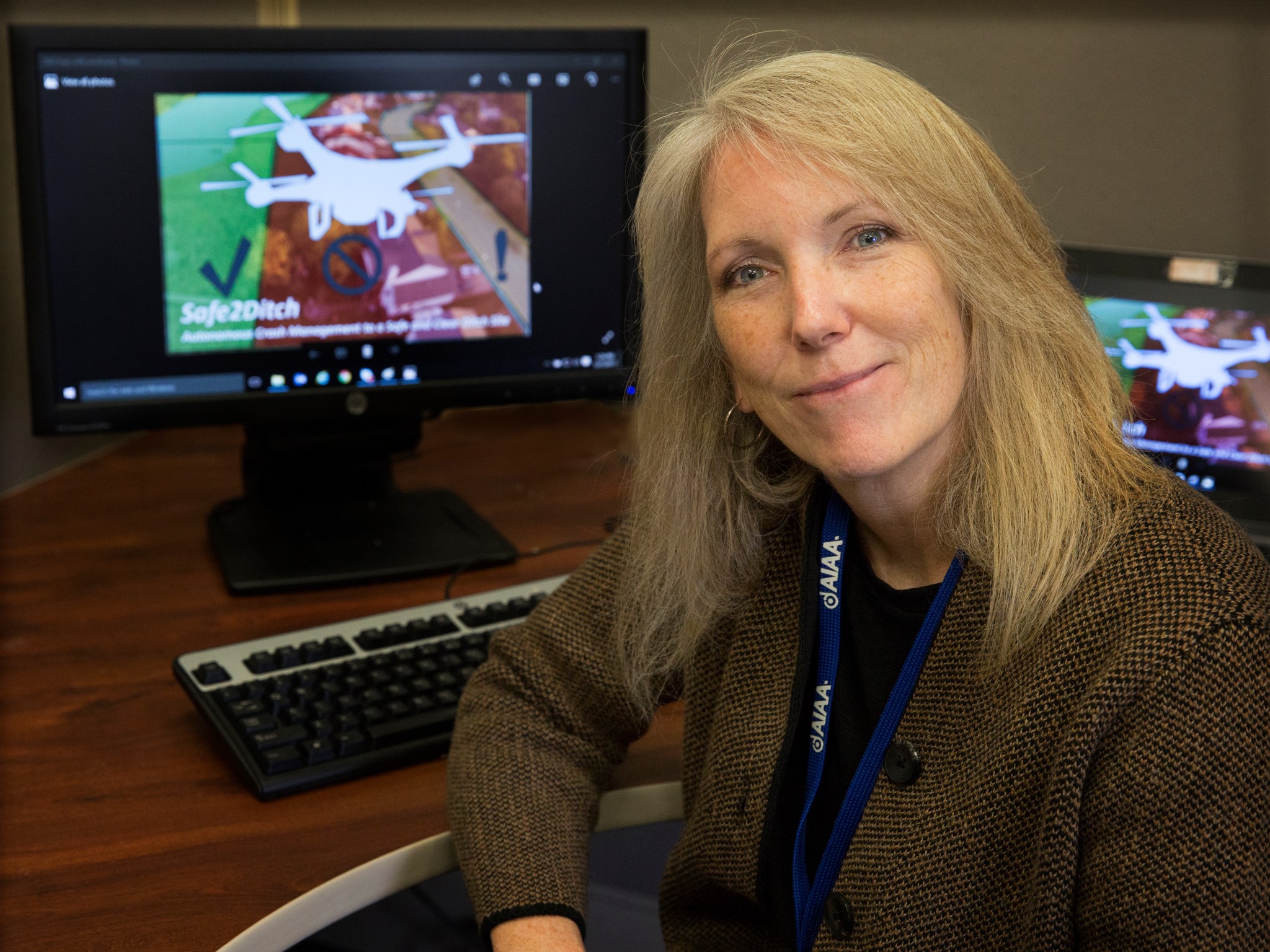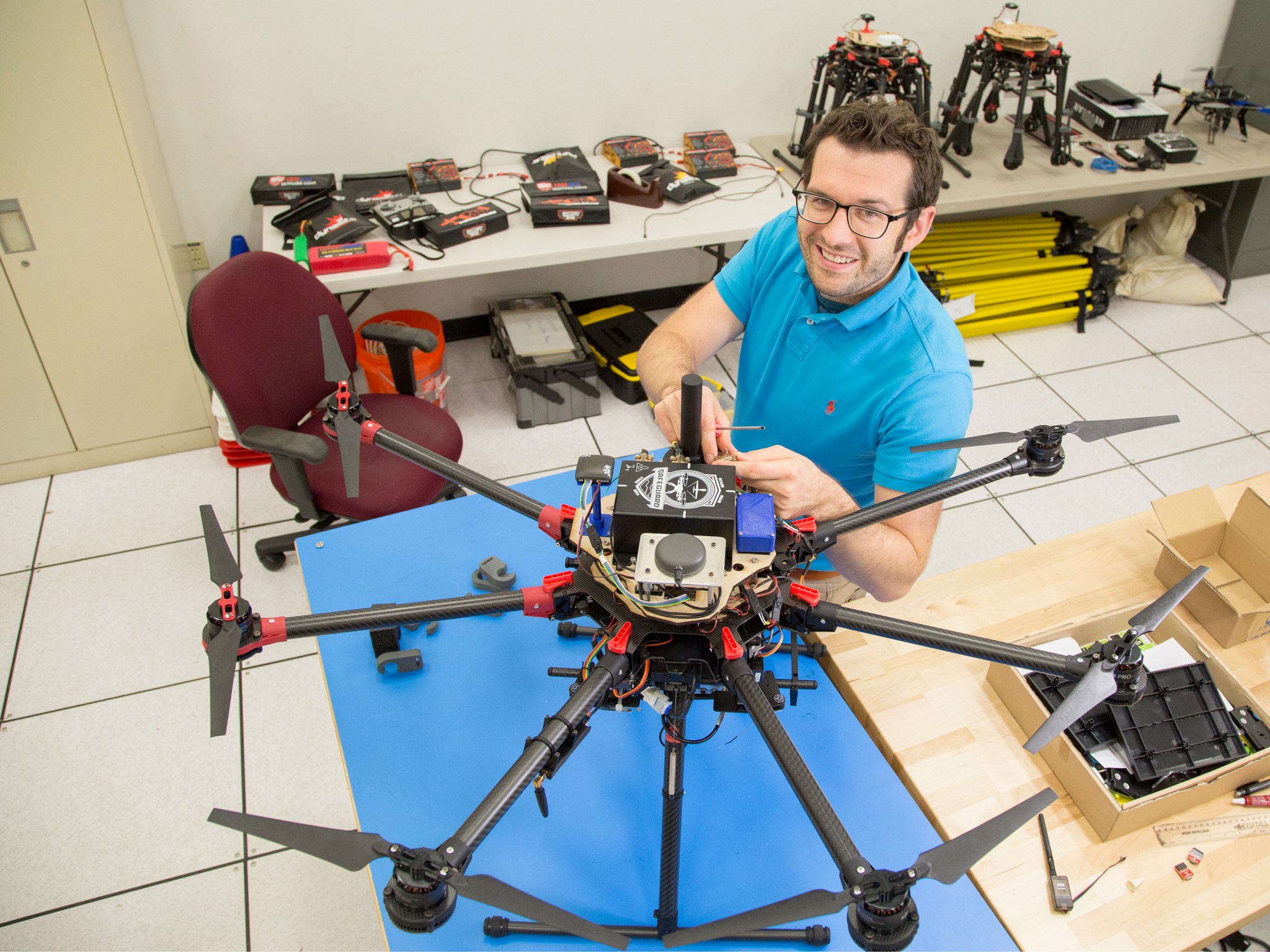Two teams of researchers at NASA’s Langley Research Center in Hampton, Virginia, had their technologies honored by R&D Magazine at its 55th annual awards conference.
The R&D 100 Awards were won for Safe2Ditch Technology, which autonomously steers small unmanned aircraft to a safe place to crash, and for Safeguard, which eliminates hazards with unmanned aircraft flying into no-fly zones.
The team behind the Safe2Ditch Technology includes the inventors, Louis and Patricia Glaab, and the prototype development team, Parker Lusk, Chester Dolph, and Nerissa Monroe. The Safeguard technology was developed by Evan Dill, Kelly Hayhurst, Steve Young, Anthony Narkawicz, Patrick Quach and Kyle Smalling.
The NASA Langley researchers competed in an international pool that included industry, universities and government laboratories, said Langley Awards Liaison Officer Kimberly Middleton.
The R&D 100 Awards, widely recognized as the “Oscars of Innovation,” salute the 100 most technologically significant products from around the world introduced into the marketplace over the past year. Winners of the R&D 100 Awards are selected by an independent judging panel and the editors of Chicago-based R&D Magazine. This year’s winners were announced at a conference Nov. 17 in Orlando, Florida.
“This can possibly lead to licensing opportunities,” Middleton said.
Safe2Ditch
Safe2Ditch Technology is autonomous crash management to a safe and clear crash site for small unmanned aircraft. Highly capable small unmanned aircraft provide substantial business opportunity, especially if allowed to operate in the suburban market.
“It runs in the background and does its own continuous assessment,” Patricia Glaab said. “It self-detects that there’s an imminent emergency.”
Reliability issues often force the use of a safety pilot for each vehicle in operation, which can be cost-prohibitive for large-scale commercial applications and limits the use of these vehicles to line-of-site operation. Extending the use of small unmanned aircraft to beyond visual-line-of-sight and to fleet operations requires a vehicle system to autonomously perform emergency management activities as a replacement to the human pilot to maintain safety to people and property in populated areas.
“We want to fill a gap in the market,” Patricia Glaab said. “You’ll need a system like this to realize the full vision for autonomous commercial drones.”
Safeguard
Safeguard is a safety net technology for uncrewed aircraft that fly into no-fly zones. Safeguard, in development for more than two years, works by continuously monitoring an uncrewed aircraft’s proximity to virtual perimeters established around no-fly-zones. Safeguard signals can be used to take action to guarantee the perimeters are not breached.
“The idea was conceived by a group of researchers, and a few of us took it and ran with it,” said Dill, a research associate in Langley’s Safety-Critical Avionics Systems Branch.
Safeguard is applicable to both rotary- and fixed-wing aircraft. It has the potential to provide a means to comply with pending regulatory directives for geo-limitation for the burgeoning unmanned aircraft industry.
“What we set out to do is create a version of geo-fencing that is very robust and highly reliable – one that can be counted on to perform its function properly and is up to the standards used in civil aviation for safety-critical systems,” Dill said.
View a video about Safeguard at:
View a webinar about Safe2Ditch at:
-end-
Eric Gillard
NASA Langley Research Center, Hampton, Virginia
757-864-7423
eric.s.gillard@nasa.gov




























